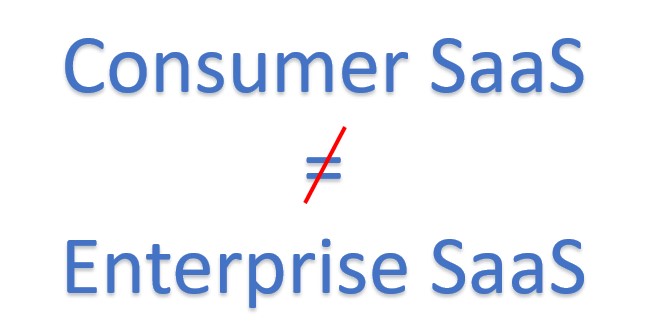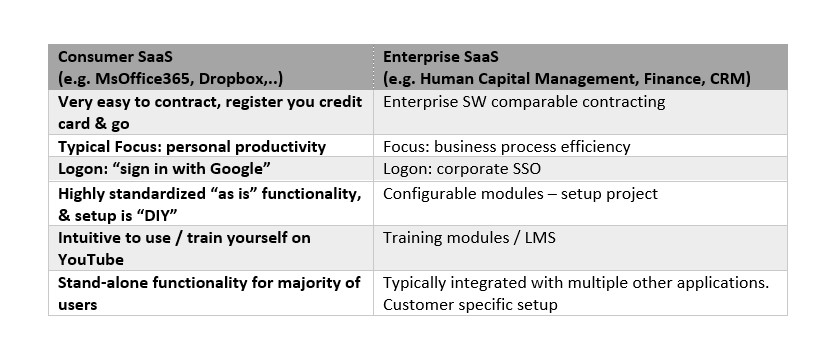Talking to non-IT corporate employees about (Enterprise) Software-as-a-Service (SaaS) based solutions shows common patterns of confusions and expectations which clearly shows how consumerization of IT and digitalization has educated non-IT people during the last years.
Everybody uses a smartphone, a PC or Mac at home, and got familiar with how to use it, how to install applications on it and how to pay for them. Over time some these applications have become more powerful and connect to other applications, all of these public cloud based. Some examples of these Consumer SaaS applications include solutions like Microsoft Office365 and Dropbox. Contracting a subscription is very easy, you register your credit card & with a few clicks you are ready to go. Many web based apps allow for “sign in with Google” or the like, removing the need to create a separate account (and remember the password for that). The functionality of the apps are highly standardized and can at best be slightly configured. This configuration is a Do-it-Yourself (DIY) setup, supported by “short how-to” videos on YouTube or help texts on an internet page (which users find by googling for it). Much focus has been put on the intuitive usage, so the learning curve is minimal.
Most of these consumer SaaS solutions focus on individual user productivity and provide “stand-alone” functionality required by the large majority of users. Freemium models enable extending some functionality for those users that want more.

The world of Enterprise Software solutions is quite different, even if they are offered from the cloud and as Software-as-a-Service (SaaS). Think here of systems for HR (Human Capital Management, payrolling, recruitment), finance (receiving & sending payments, doing quarterly closures and reporting across multiple countries), or Customer Relationship management.
These solutions focus on making business processes efficient (and automated and/or “self-service”), so “enterprise productivity” rather than individual productivity is focused on.
The ”as-a-Service” typically refers to a payment per user & module model per month or year flexible license model, and the fact that companies no longer own the licenses and install it on their own servers, but rather “rent” the functionality from a cloud hosted environment managed by the vendor.
To start working with Enterprise SaaS solutions is more than a few clicks on a webpage. Contracting processes are comparable to those of Enterprise Software with paperwork, negotiations on pricing and modules, and the need for an implementation project with consultants to get the solution configured. This is because processes are implemented differently between companies, and SaaS solutions “never live on an island”. These solutions are almost always connected to other applications, resulting in technical integrations and data exchange between systems that needs to be configured and managed (also because often sensitive data is exchanged). As functionality of the applications can be extensive, and modules may be configured/adapted to company specific processes, users often are required to do some form of formal training to be able to use them efficiently and effectively. To manage the workload of the IT helpdesks, companies want to track that training of the users in Learning Management Systems, which may be a SaaS solution by itself.
